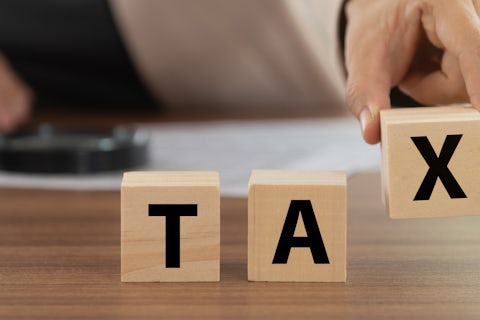The first of April is a busy day this year, bringing with it the hat trick of Easter Sunday, April Fools’ Day, and the start of new LBTT rules for tenants in Scotland. In previous blogs, we’ve looked at the requirement to submit LBTT returns every three years during the lease, but what are the other points in a lease where you need to submit a return?
As we explained in the first part of our blog, Land and Buildings Transaction Tax should reflect the rent actually paid over the lifetime of a lease.
Whilst three-yearly returns will clarify the rent paid as a result of rent reviews or turnover rents, there are a number of other situations where a return should be submitted. An LBTT submission is a tax arrangement which is personal to the tenant, and Revenue Scotland may only correspond with the party making the return.
From a practical point of view, when a person (or company) ceases to be the tenant under a lease, their tax liability for the lease will ‘crystallise’ and Revenue Scotland will want to know that person has paid the right amount of tax. This means that further tax returns need to be submitted in the following circumstances.
Expiry of the term – tenant vacates
At the end of the lease, an outgoing tenant needs to submit a further tax return confirming the final value of the lease. For further information on determining the Net Present Value of a lease, take a look at our guidance on submitting a review return to Revenue Scotland by clicking here.
Provided the tenant has complied with its obligation to make three-yearly returns during the life of the lease then (unless there has been an intervening rent review), the most recent review return should accurately reflect the value of the lease and there will likely be no further tax to pay. However Revenue Scotland can effectively close their records on the lease, knowing the right tax has been paid.
Expiry of the term – tenant remains in occupation
The tax treatment varies between LBTT and the previous Stamp Duty Land Tax regime (which still operates in England). If no notice (or insufficient notice) is given to vacate the property at the end of the term, then the lease continues in full force and effect on the same terms and conditions for a period of one year. Under SDLT, this was treated as a fresh lease for a period of one year.
However, for an LBTT lease, the continuation is treated as an extension to the existing lease. So where SDLT liability would arise on a ten year lease, and a further one year lease, LBTT is effectively payable on an eleven year lease.
If a tenant remains in occupation after the expiry of the contractual term, the obligation to submit review returns continues – either the tenant must submit a three-yearly return (e.g. if the lease continues until year 12), or a return confirming the lease has come to an end, as above.
Revenue Scotland have confirmed that if no return is submitted at the end of the contractual term, they will assume that the tenant continues in occupation on a year to year basis (and associated penalties for failing to submit three-yearly returns will apply). That is why it is important to let Revenue Scotland know when the lease has come to an end.
Assignation – outgoing tenant
When a tenant assigns their interest in a lease, the new tenant takes over responsibility for submitting three-yearly returns.
However, if there has been a change in rent or in the value of the lease since the last return is made, then it is likely that there will be a balancing tax payment due at the next three-yearly return. Liability for that tax payment needs to be apportioned between the original tenant and the new tenant.
In the same way as a tenant should notify Revenue Scotland when the lease comes to an end, the outgoing tenant needs to submit a review return confirming the tax that they have paid to date and making any final balancing payment of tax.
Assignation – incoming tenant
An incoming tenant takes on the responsibility for making three-yearly returns throughout the life of the lease. They will therefore need to know the amount of tax paid at the time of grant (and any subsequent three-yearly reviews), so that this can be deducted from the final tax calculation on further three-yearly reviews.
As above, the outgoing tenant should submit a return at the point they assign their interest in the lease. The incoming tenant will need to make sure this has been done and the appropriate tax paid. Otherwise, at the next review, the assignee will be liable to pay the previous tenant’s share of any uplift.
Early termination
If the lease is terminated before the expiry of the contractual term, for whatever reason, then a review return must be made. Again, this ensures that the tax reflects the rent actually paid under the lease.
On a ten year lease, with a tenant break at year five, the LBTT is calculated on the full ten year term (and the break option is disregarded). However, if the tenant exercises its break option, it has only paid half the rent on which the lease value was calculated.
Therefore, when a review return is submitted, the tax applicable to the final value of the lease may be less than the tax which was paid at commencement. In that case, a rebate may due from Revenue Scotland of the overpayment of tax.
The same applies to renunciation by the tenant, or even irritancy by the Landlord. In all cases, it is the rent actually due to the Landlord which determines the value of the lease.
It is important to remember that LBTT is not a one-off liability at the start of a lease, but is the start of an ongoing relationship between the tenant and Revenue Scotland. If you have any queries regarding Land and Buildings Transaction Tax or how it affects your lease, please do not hesitate to contact a member of the Gilson Gray Real Estate team.
The information and opinions contained in this blog are for information only. They are not intended to constitute advice and should not be relied upon or considered as a replacement for advice. Before acting on any of the information contained in this blog, please seek specific advice from Gilson Gray.








